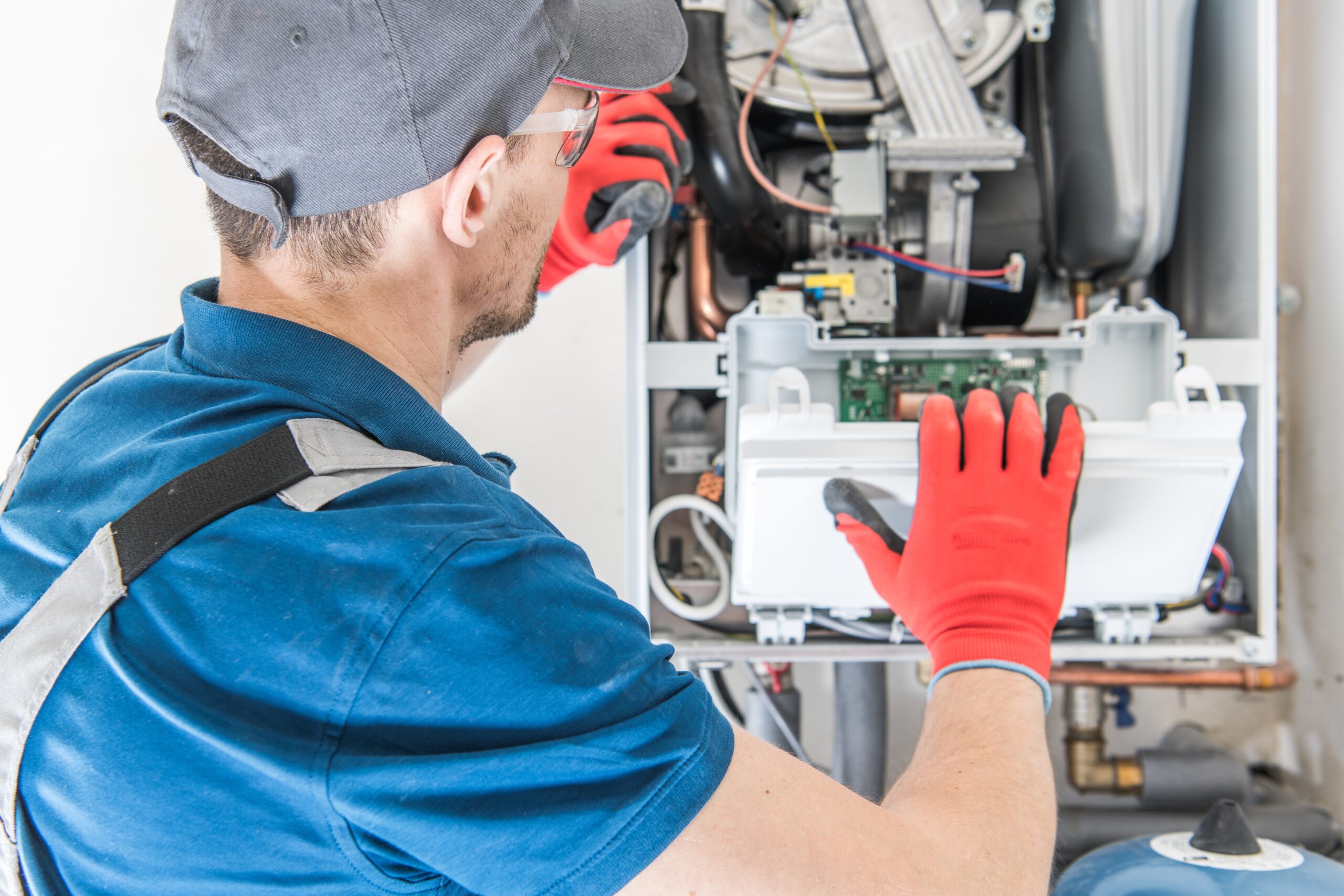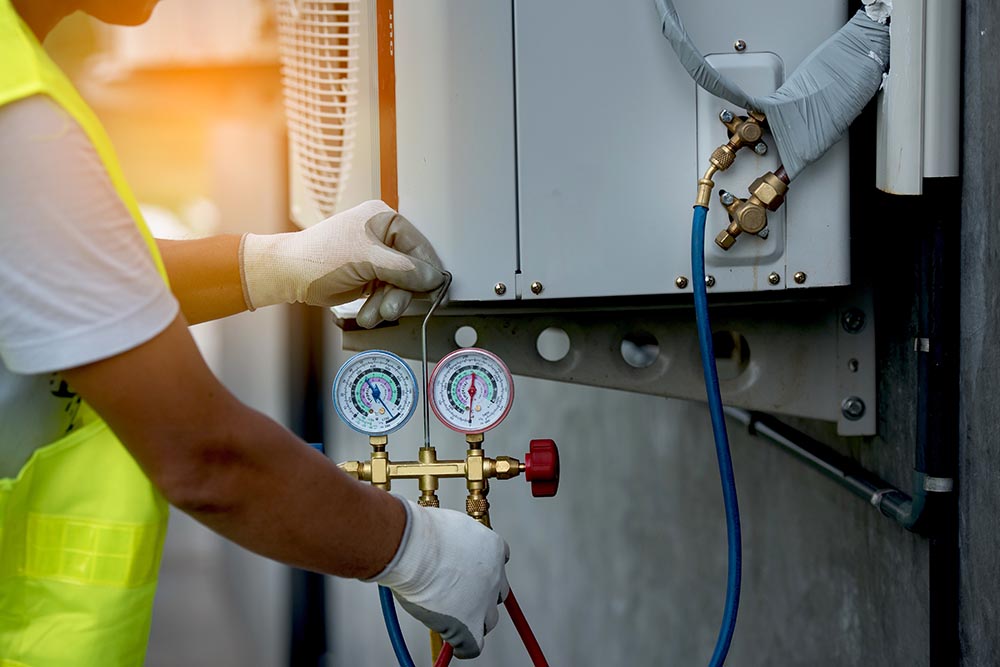Expert Tactics to Improve Indoor Air Quality with ductless mini splits
Expert Tactics to Improve Indoor Air Quality with ductless mini splits
Blog Article
Just How a Warm Pump and Furnace Work With Each Other to Enhance Your Home's Home heating Performance
Understanding exactly how a warmth pump and furnace interact is important for home owners seeking efficient home heating services. Each system has its strengths, giving a well balanced strategy to home convenience. The warm pump stands out in moderate temperatures, while the heating system supplies rapid heat during severe cold. This synergy not only decreases power prices yet additionally improves the lifespan of both devices. What elements influence this collaboration, and exactly how can home owners maximize their advantages?
Comprehending Warm Pumps: How They Function
Numerous people might be unfamiliar with their inner workings, warm pumps play a crucial role in modern heating systems. These gadgets run by moving heat from one place to one more, making use of the concepts of thermodynamics. In cooler months, a heat pump extracts warmth from the outdoors air, ground, or water, and transfers it indoors to warm up the living room. On the other hand, during warmer months, it can turn around the process, functioning as an ac system by eliminating warmth from inside to the outside.Heat pumps consist of an evaporator, expansion, condenser, and compressor shutoff. The refrigerant within the system soaks up warmth as it evaporates at low temperature levels and stress. The compressor after that raises the pressure and temperature of the refrigerant, enabling it to launch warm as it condenses. This effective process can substantially lower energy intake contrasted to traditional heating approaches, making heatpump a lasting choice for environment control in homes.
The Duty of Furnaces in Home Home Heating
Furnaces play a vital duty in home heating by giving a trusted source of heat throughout the cooler months. They operate by generating heat through combustion or electrical resistance, dispersing it throughout the home through ducts or glowing systems. The performance of a furnace is frequently measured by its Annual Gas Use Effectiveness (AFUE) score, which suggests how effectively the system converts gas right into heat.Furnaces can use different power sources, including gas, electrical power, oil, or lp, enabling property owners to select one of the most appropriate alternative for their demands. Unlike warmth pumps, which might have a hard time in extreme cool, heating systems maintain consistent performance, guaranteeing that interior temperatures remain comfortable despite outside conditions. In addition, modern furnaces frequently come equipped with innovative technology, such as smart thermostats and variable-speed blowers, enhancing their efficiency and responsiveness. This versatility makes heating systems an essential part in all-inclusive home heating methods.

Benefits of Utilizing Both Solutions With Each Other
Integrating the strengths of both heating systems and heatpump can bring about a more efficient and effective home heating solution. Using both systems allows house owners to take advantage of the warmth pump's energy performance throughout milder temperatures while counting on the furnace for more severe cold problems. This double technique can significantly lower power costs, as heatpump consume less electrical energy than typical heating methods when temperatures are moderate.Additionally, utilizing both systems together can improve convenience degrees in the home. Heatpump can supply constant, even heating, while heating systems can swiftly elevate ambient temperatures when required. The combination of both systems can expand the lifespan of devices by reducing wear and tear on each device, as they share the work. Ultimately, property owners can take pleasure in a balanced, cost-effective heating option that changes flawlessly to varying climate condition, making sure a cozy and welcoming home throughout the winter season.
Just How Heat Pumps and Furnaces Complement Each Other
They produce a complementary home heating system that takes full advantage of efficiency and convenience when homeowners incorporate warm pumps and heating systems. Warmth pumps operate by moving warmth from the outdoors air or ground, making them very effective in modest climates. They excel during milder temperature levels, supplying cost-effective home heating. Conversely, furnaces generate heat with combustion or electrical resistance, providing solid, immediate heat throughout extreme chilly conditions.The combination of these two systems enables dynamic adjustments based on temperature level fluctuations. Throughout warmer months or milder winter days, the heat pump can take the lead, saving power and reducing expenses. As temperatures decrease, the furnace can flawlessly involve, making certain regular heat throughout the home. This harmony not just maximizes power usage yet also boosts the life expectancy of both systems, as each device runs within its Going Here optimal performance variety. With each other, they create a well balanced environment that adjusts to varying climate demands.
Maximizing Performance: Tips for Homeowners
Home owners can improve their home heating performance via a number of sensible strategies. Developing a regular upkeep schedule, integrating clever thermostat modern technology, and carrying out effective insulation and securing solutions are essential steps. These actions not just boost comfort however additionally lower energy expenses.
Routine Upkeep Arrange
To guarantee maximum home heating efficiency, developing a regular maintenance schedule is crucial for any type of home. House owners should focus on routine assessments of both heat pumps and furnaces to establish peak performance. This includes transforming air filters every one to 3 months, as blocked filters can greatly decrease effectiveness. Additionally, scheduling professional maintenance a minimum of yearly allows specialists to recognize and deal with potential problems prior to they escalate. House owners ought to also cleanse the warm pump's outdoor device to stop debris buildup that can hinder air flow. By adhering to a routine maintenance timetable, homeowners not only enhance their home heating systems' effectiveness but likewise prolong their life expectancy, resulting in greater comfort and minimized power expenses throughout the cooler months.
Smart Thermostat Assimilation
Incorporating a smart thermostat right into a home furnace can significantly boost energy performance, particularly as it allows for exact control over temperature level settings. These devices can learn the property owner's timetable and choices, automatically adjusting the temperature to optimize comfort while minimizing energy usage. For example, they can reduce heating during times when the home is vacant, lowering unneeded consumption. Lots of clever thermostats likewise give real-time energy use information, enabling home owners to make enlightened choices concerning their heating routines. Additionally, remote gain access to using smartphone applications allows individuals to readjust settings from anywhere, making sure the home is cozy upon return. On the whole, wise thermostat integration not only boosts comfort yet substantially adds to energy savings and performance.
Insulation and Securing Solutions
Smart thermostats play a crucial duty in power efficiency, yet their efficiency can be substantially enhanced by proper insulation and securing remedies. House owners must prioritize insulating walls, floorings, and attics to decrease warm loss. Premium insulation products, such as spray foam or fiberglass, can considerably improve thermal resistance. In addition, sealing gaps around doors, home windows, and air ducts avoids chilly air seepage and warm escape. Weatherstripping and caulking work approaches for attending to these leaks - heat pump replacement ooltewah tn. Routine assessments for air leaks, along with the usage of blower door examinations, can help determine issue areas. By buying insulation and securing, home owners can maximize the performance of their heating unit, eventually causing minimized power consumption and reduced energy costs
Common Myths Concerning Heat Pumps and Furnaces
What mistaken beliefs surround heatpump and heaters? Several individuals wrongly think that heatpump are ineffective in cooler climates. Actually, modern heatpump are made to operate successfully even in low temperature levels, my explanation giving reputable heating throughout winter. One more usual myth is that heating systems are always more effective than warm pumps. This depends on the specific energy sources and performance ratings of the devices in question. Some might likewise assume that using both systems all at once is unnecessary, yet in truth, this mix can enhance heating effectiveness, especially during extreme weather condition conditions. Furthermore, individuals typically assume that heatpump require continuous maintenance, when truthfully, they have comparable upkeep needs to typical furnace. By disproving these misconceptions, property owners can make more educated choices regarding their home heating choices, inevitably leading to improved convenience and power performance in their homes.
Maintenance Considerations for Combined Systems

Often Asked Inquiries
Can Heat Pumps Work Efficiently in Very Cold Climates?
Heatpump can have a hard time in exceptionally cool climates because of decreased effectiveness and warm extraction restrictions. Developments in technology have actually led to designs designed for far better efficiency in such problems, enhancing their practicality in extreme settings.
The Length Of Time Do Warm Pumps and Furnaces Normally Last?
Warm pumps commonly last 15 to 20 years, while furnaces have a life expectancy of 15 to thirty years. Normal maintenance can extend their long life, making sure efficient procedure and minimizing the demand for early substitutes.

What Is the Typical Expense of Setting Up Both Equipments?
The average expense of setting up both a heatpump and a furnace commonly ranges in between $5,000 to $10,000 - ductless mini splits. Variables affecting this cost include system dimension, installment intricacy, and local labor rates
Exist Tax Motivations for Utilizing Energy-Efficient Heating Equipments?
Many homeowners ask about tax motivations for energy-efficient heating systems. Different federal and state programs usually provide credit ratings or refunds, motivating the adoption of lasting innovations to decrease energy usage and promote environmental duty.
Just how Do I Pick the Right Dimension Heatpump and Furnace?
Picking the right size heat pump and furnace involves computing the home's square video footage, thinking about insulation top quality, and examining regional environment. Consulting a professional can guarantee perfect system efficiency and energy performance based on particular needs. heat pump service. Understanding exactly how a warmth pump and heating system work with each other is essential for home owners looking for effective home heating services. In cooler months, a warm pump essences heat from the outside air, ground, or water, and transfers it indoors to heat the living space. When property owners integrate heat pumps and furnaces, they create a complementary home heating system that optimizes effectiveness and convenience. Warmth pumps operate by moving warm from the outdoors air or ground, making them highly effective in moderate climates. Warm pumps can battle in extremely cool climates due to minimized effectiveness and warm removal constraints
Report this page